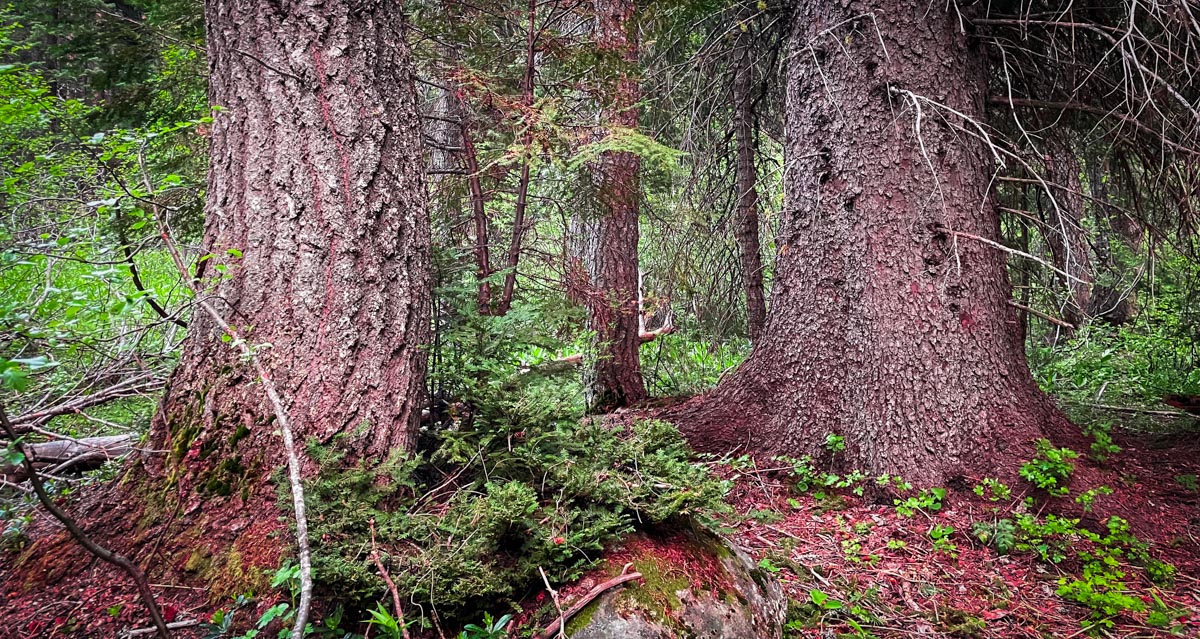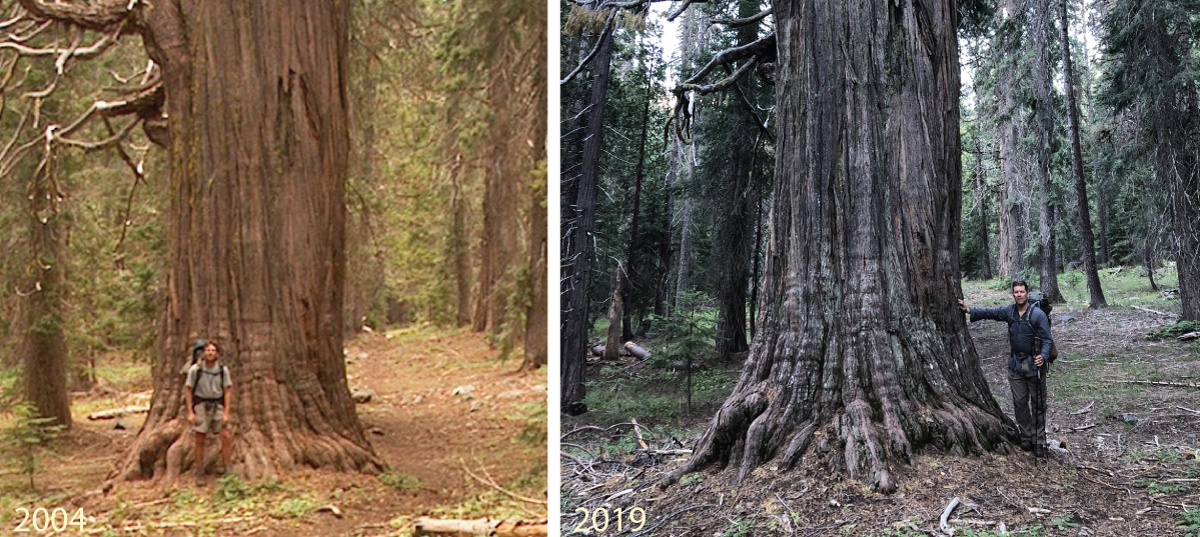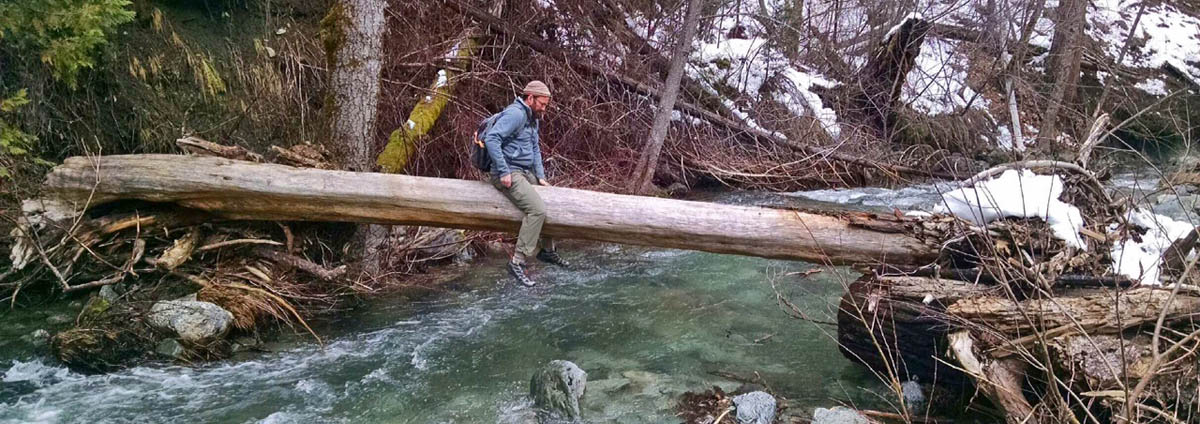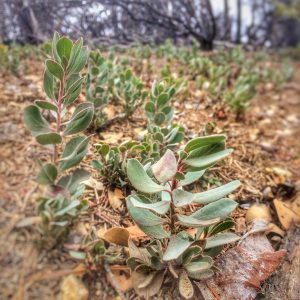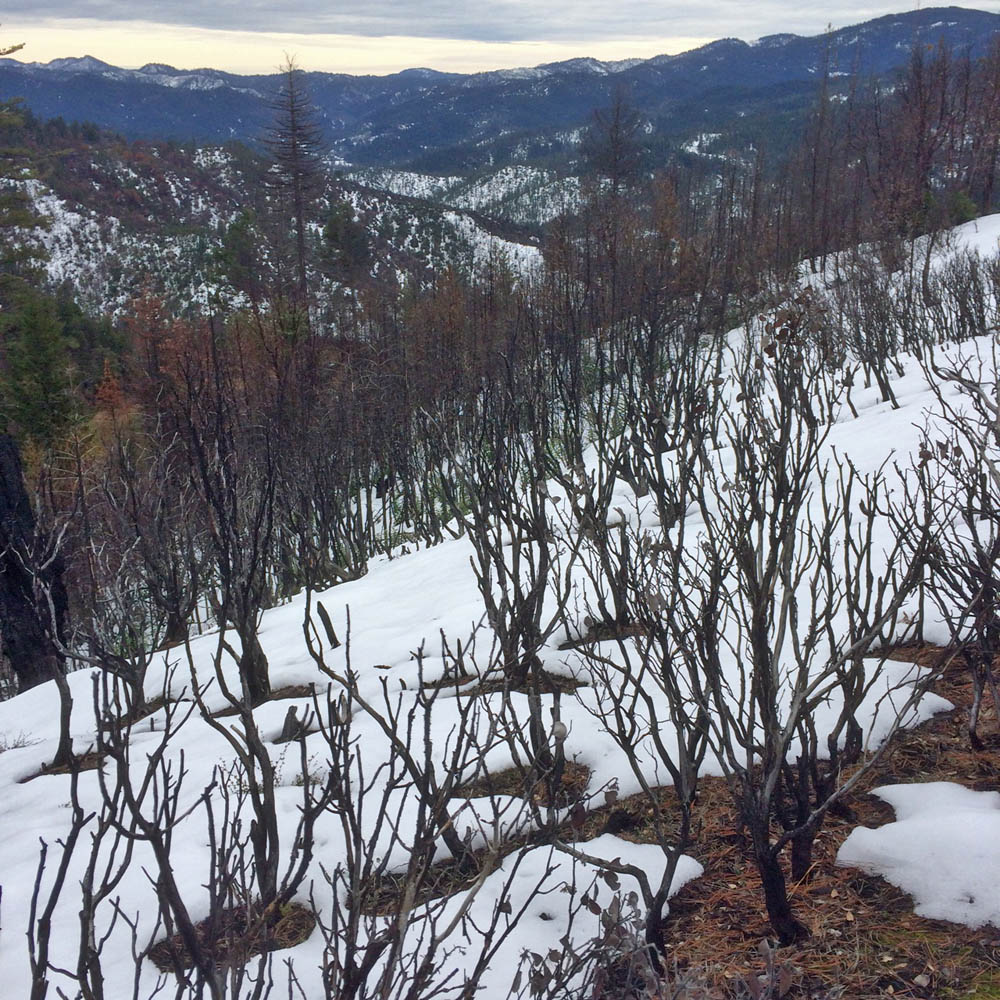Engelmann spruce and subalpine fir form one of the most common forest associations in the Rocky Mountains and parts of the Cascades. In California, this is one of our rarest subalpine forest vegetation alliances. These two species occur in only a few places in the state–often not even together unlike in the rest of their range. We recently visited the Russian Wilderness for a trail working trip and I became re-familiarized with these two wonderful tree species.
Continue reading “Engelmann Spruce and Subalpine Fir in California”Diamond Lake – English Peak Revisited
Marble Mountain Wilderness
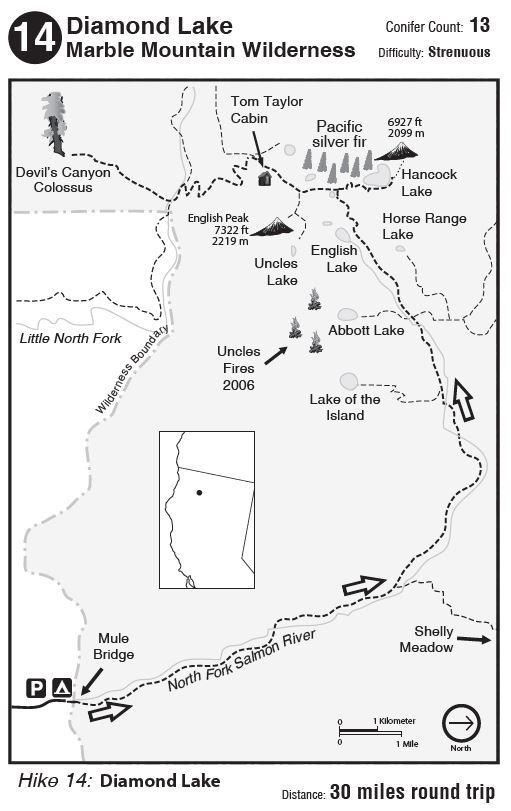
I first visited this area in 2004 when my friend Jay and I attempted an ambitious loop starting from the Wooley Creek Trailhead, to the headwaters at Wooley Lake, back to Hancock Lake, and then laboring along the non-existent trail on Steinacher Ridge back to our car. This was the first major hike I took in the Marble Mountain Wilderness and my encounter with Pacific silver fir (Abies amabilis) around the Diamond Lake – English Peak region inspired the writing of my first book, Conifer Country.
Continue reading “Diamond Lake – English Peak Revisited”In Defense of Plants
Conifer Country
I was fortunate to join Matt and discuss my passion: Conifers of the Klamath Mountains. Please listen or even better, subscribe where ever you get your podcasts.
I am obsessed with the botanical world. In Defense of Plants is my way of sharing that love with you.
— Matt, In Defense of Plants
Obligate & Facultative Seeders
Last weekend, I hiked in Trinity County along a low-elevation, fire-prone section of the Bigfoot Trail between Highway 3 and Hayfork and was able to witness obligate & facultative seeding in action.
From Field Guide to Manzanitas, Backcountry Press, 2012
One-third of manzanita species are facultative seeders. These are species that regenerate post-fire by both seed and burl resprouting. The remainder are obligate seeders that lose their entire adult population in a fire and depend on a seed bank for regeneration. Obligate seeding is the current model in manzanita evolution.
To understand why, consider the climatic dynamics over thousands, or tens of thousands of years or more. In the case of the resprouting species, particular individuals can live for centuries, resprouting over and over, cloning new individuals as the burls expand with each fire cycle. But in that population, the rate of genetic change is limited, because most individuals live a long time by way of asexual reproduction. This suggests that populations may be unable to respond to rapid climatic changes that might occur in only hundreds of years. The obligate seeders, on the other hand, lose all adults in stand-replacing fires and new post-fire generations have to establish from more genetically diverse seeds. Those populations consequently have greater flexibility to shift and adjust as circumstances require; traits that might have been rare and less important in older generations can emerge through natural selection and become critical in the newer generations within the lifetime of resprouting manzanitas.
Much of this area burned in the summer of 2015. While evidence of the fires were everywhere, there are many signs of the next generation of plants returning to the landscape. This was particularly true on some of the south-facing slopes above Philpot Campground where two species of manzanitas were exploring different reproductive regimes– both obligate & facultative seeding.
Nature Notes:
Klamath Mountain Snowpack
Pondering the 2016 hiking season…
I have tracked how Klamath Mountain snowpack is correlated with the beginning of summer hiking season since 2003. In 2009 I started the Bigfoot Trail on the summer solstice, and it worked out perfectly—I found the perfect mix of snow, open trail, and manageable river crossings. 2010 was a late snow year and June was only open for hiking in the Southern Siskiyous. In 2011 I began a section hike from the Trinity Alps to the Siskiyous on June 29th in a snowstorm and we trekked across snow for nearly two weeks while in the Trinity Alps and Marble Mountains. Our time also included numerous, often stressful, fords of raging rivers in the low-country. What follows is an analysis of the El Niño winter we are emerging from and what snowpack trends seem to be saying about the 2016 hiking season.

